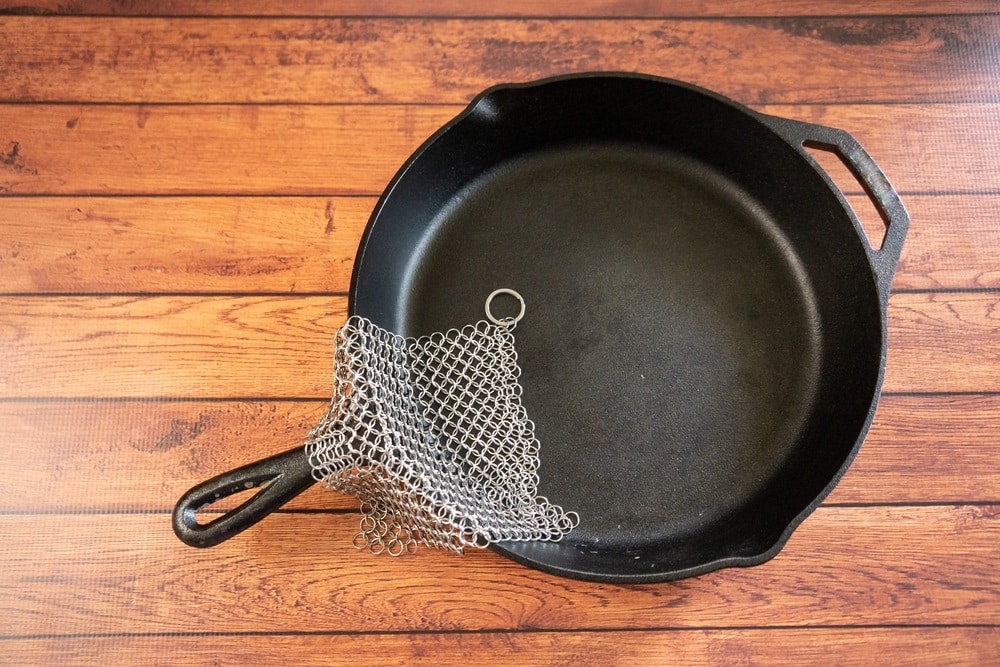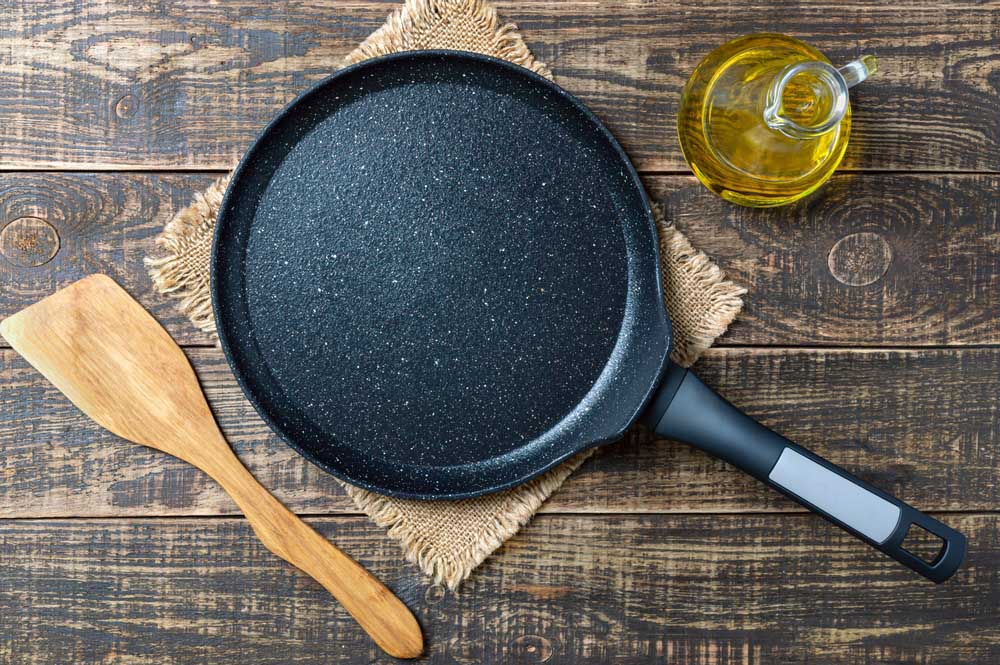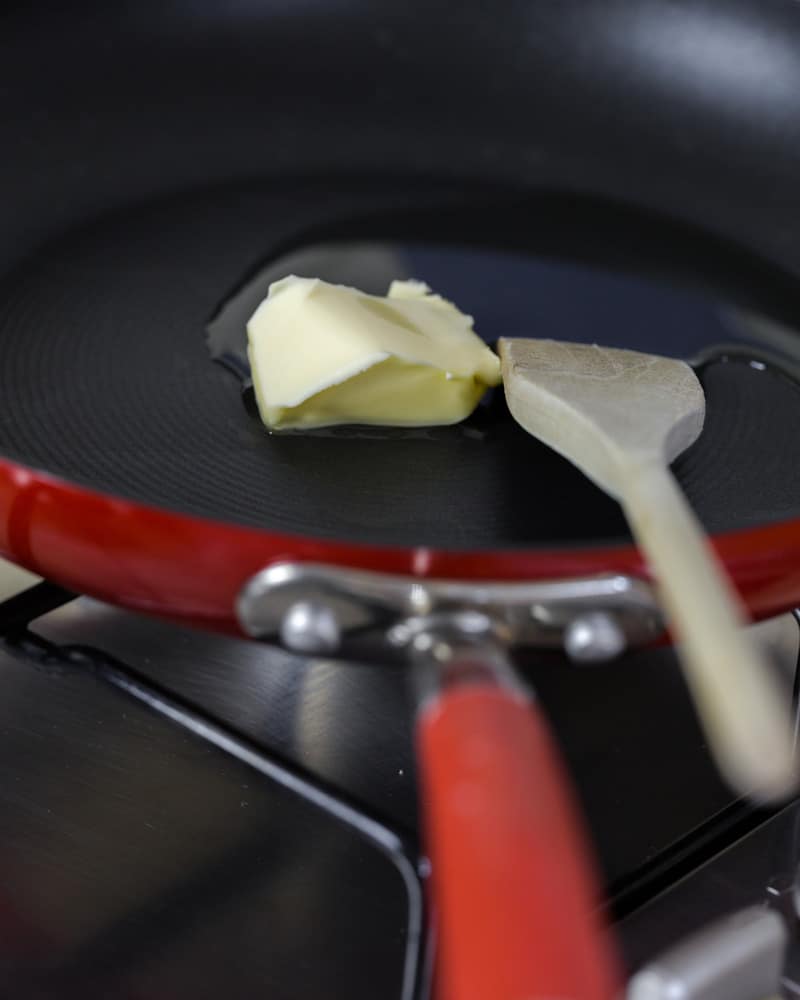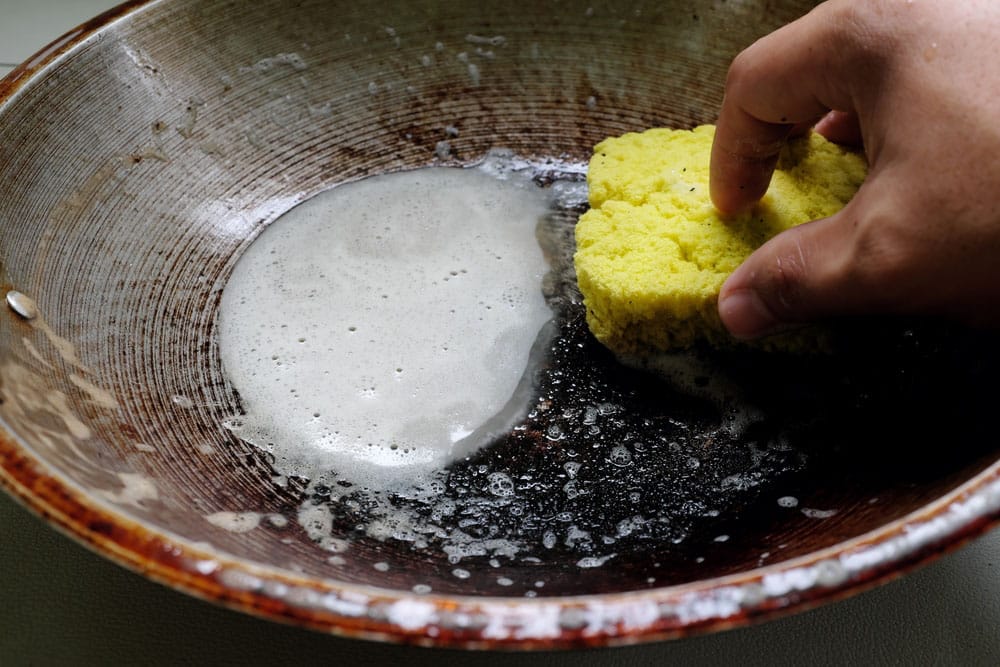
Every health-conscious family wants the best cookware for their kitchen. There are many different cookware types, so how do you choose the best type of cookware? It will require doing some research.
There are plenty of pots, pans, and bakeware in all kinds of shapes and made with different materials. You can take your pick from porcelain, aluminum, cast iron, stainless steel, and anodized cookware.
Anodized cookware means that the material in cookware has undergone an electrolytic process. It simply means that the metal of your cookware won’t leach into food.
Follow the manufacturer’s guidelines for cookware maintenance
The cookware is nonstick and easy to clean. So what happens when your anodized cookware is looking worse for wear? Take note that you should always follow the manufacturer’s directions for maintaining your cookware.
You’ll discover that scrubbing works for some surfaces, such as stainless steel, but not for hard anodized cookware.
Your cookware should only be cleaned with dish soap and a sponge. If the manufacturer says you shouldn’t clean your anodized cookware in the dishwasher, you shouldn’t.
The cookware has a long life span and won’t easily peel or corrode if treated properly. The anodization process provides your cookware with a smooth, non-porous finish, and you want to keep it that way.
A few don’ts with your hard anodized cookware
- Don’t just use any cleaning solutions that aren’t created specifically for cookware. Grout cleaners or oven cleaners aren’t designed for cleaning cookware. Most of these sorts of cleaners have ammonia or bleach in them. These are harmful to hard-anodized cookware.
- To protect your hard-anodized pots and pans from damage, only wash them with appropriate cookware cleaners. Never use bleach on this kind of cookware.
- Don’t remove your cookware from the stove, and dunk it in cold water. This can warp your cookware. Allow the pots or pans to cool before washing them.
Looking after your anodized cookware
Before you try to restore your hard-anodized cookware, it has to be clean. Wash it gently in hot, soapy water with a soft cloth. It’s non-stick cookware, so you want to avoid anything hard on its surface.
If you have stuck-on food remaining, apart from the warm water that softens the food, make use of a soft-bristled cleaning brush.
Bicarb and vinegar a staple cleaning product
You may find that over the months, your cookware has gained some stubborn stains. You can easily apply a gentle cleaning solution to help remove them. A good and effective solution is bicarb, vinegar, water, and lemon juice.
Just mix these items and make a paste with them. Spread this over the stained areas. You can leave it on for an hour. Rub the area gently with a non-abrasive sponge and rinse off with warm, soapy water.
Repairing scratches
Even though you are careful with the type of spoons and forks you use in your cookware, it inevitably develops scratches. There are cookware repair kits available that you can try to repair your cookware.
These non-abrasive cleaners are designed to remove scratches without damaging the surface of your cookware any further. The repair kit has a special repair compound that fills in the scratches, restoring the hard anodized cookware surface.
There are also cookware repair sprays that you can buy at your local hardware store or online. When you read the instructions, you’ll find that you need to spray quite a bit of the repair spray to coat your pan.
Read the instructions to see how long you should leave the spray on your cookware before rinsing it.
Restore the shine
Sometimes your cookware just looks dull and dirty. To restore the shine to your hard anodized cookware, you can either opt for a commercial polishing solution or make your own.
This once again requires you to mix baking soda and water to form a paste. After you’ve applied the paste to the surface and left it for half an hour or so, you can use a non-abrasive sponge to rinse the cookware.
Restoring your non-stick surface
If you find that food is sticking to your cookware, it is possible to reapply a non-stick coating to a hard-anodized pan. It’s a job best left to an expert, as it does require special products.
These professionals specialize in coating cookware. They know how to restore damaged and worn-out pots and pans.
However, if you don’t want to go that route, there are other ways to improve the cookware’s non-stick performance.
- Once your cookware has been washed and dried, you can apply a thin layer of vegetable oil to the pan’s surface.
- Heat your cookware on the stove, Choose a medium heat and wait till the oil begins to smoke.
- You can then wipe the oil out with a paper towel. Wash the oil off.
Cleaning the interior of hard anodized cookware
Here are a few tips for cleaning the inside of your cookware:
- Fill the cookware with water. Add a squirt of dish soap. Place the cookware on your stove with the lid on.
- Once the water boils, remove the cookware from the heat.
- Once cool, pour out the water and clean with a sponge.
- Dry the cookware thoroughly.
Clean your cookware after each use
Always clean your hard anodized cookware after each use. This is because the cookware has aluminum as its base metal.
As suggested, if there are food stains, wash the cookware in warm water with baking soda. This is very effective for removing stains and odors without damaging your cookware.
Hard anodized cookware is durable and non-stick. It’s exactly what every cook wants in the kitchen. However, gradually, scratches appear, it becomes discolored, and it looks worse for wear.
Luckily, hard anodized cookware can be restored simply by using baking soda, vinegar, lemon juice, and water. With regular cleaning, it can continue to perform well and still look good at the same time.


